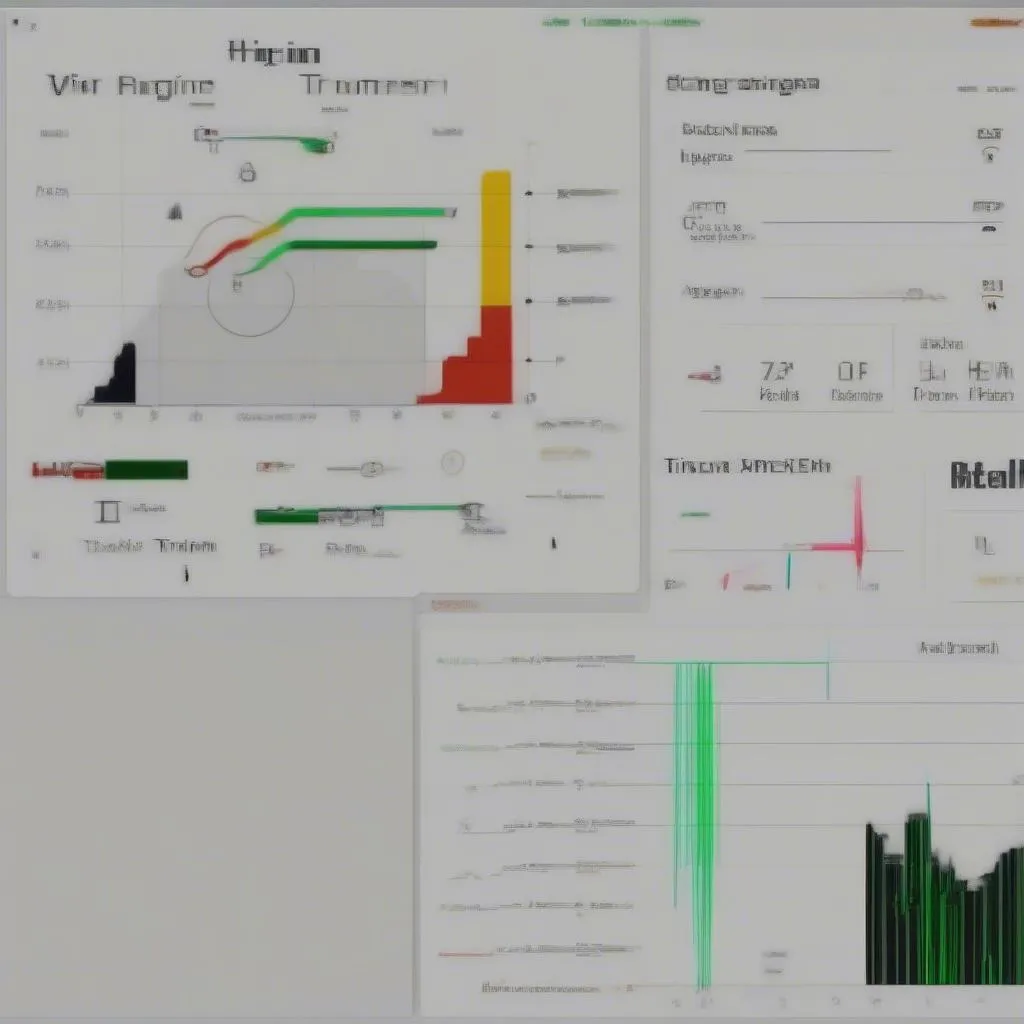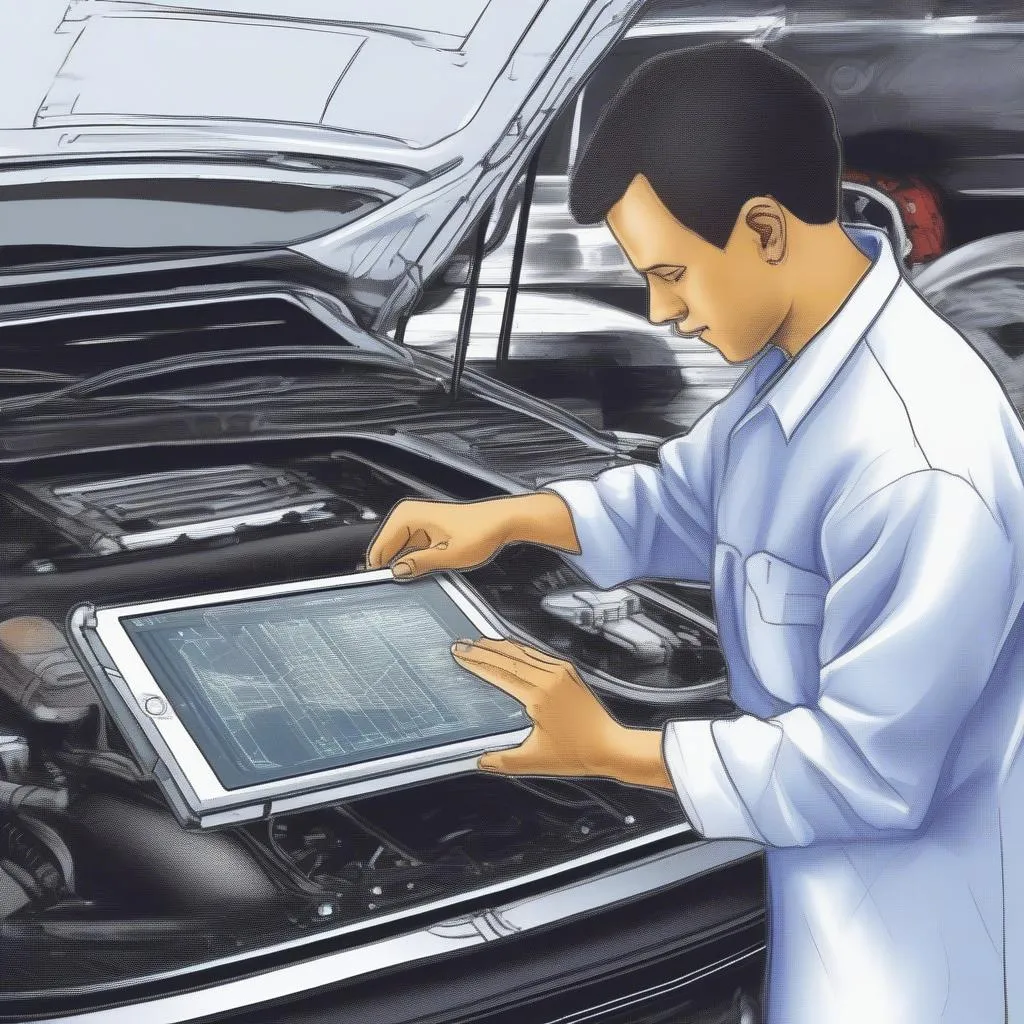Imagine this: you’re driving down the Pacific Coast Highway, California, the sun is shining, and your favorite song is playing on the radio. Suddenly, your car sputters, the check engine light flashes, and your idyllic drive turns stressful. You manage to limp your Toyota into a garage in San Francisco, but the mechanic seems puzzled. “Hmm, the codes aren’t giving me a clear picture,” he says, “I need to look at the live data.”
Live data. It sounds important, almost mysterious. But what exactly is it, and how does a mechanic interpret it to pinpoint your car troubles?
This article dives deep into the world of live data on scan tools, demystifying the process and empowering you with the knowledge to understand your car’s health better.
Understanding the Language of Your Car: What is Live Data?
In simplest terms, live data is like your car’s vital signs, constantly streamed from various sensors and displayed on a scan tool, often referred to as a dealer scanner, especially for European cars. It’s the real-time information about your engine’s performance, transmission behavior, emissions systems, and much more.
Think of it as the difference between looking at a single photograph of a runner and watching a live video of their race. The photo gives you a snapshot, while the video shows you their pace, stamina, and even their running form – offering a much deeper understanding of their performance.
Deciphering the Data: How to Interpret Live Data
Interpreting live data is where the real skill comes in. It’s not just about reading numbers; it’s about understanding the relationships between them and recognizing patterns that might indicate an issue. Let’s break it down:
1. Knowing What to Look For
Different diagnostic trouble codes (DTCs) point towards specific systems. A “P0171” code, for example, suggests a lean fuel mixture. Armed with this code, a mechanic would focus on live data parameters related to fuel delivery, such as:
- Oxygen Sensor (O2) Readings: These sensors measure the oxygen content in the exhaust, indicating whether the fuel mixture is lean (too much oxygen) or rich (too little oxygen).
- Short and Long Term Fuel Trim: These values represent the ECU’s adjustments to fuel delivery. Large variations, especially in the positive range, can indicate a vacuum leak or faulty fuel injectors.
- Mass Air Flow (MAF) Sensor Readings: This sensor measures the amount of air entering the engine, crucial information for the ECU to calculate the correct fuel injection.
2. Recognizing the Red Flags
Interpreting live data is like putting together a puzzle. You need to analyze various parameters simultaneously to get a complete picture. For instance:
- Inconsistent readings: If the MAF sensor reports a normal airflow, but the O2 sensor indicates a lean mixture, it could suggest a problem with the O2 sensor itself or a vacuum leak.
- Fluctuating values: A constantly fluctuating coolant temperature reading could indicate a faulty thermostat or a problem with the cooling system.
- Values outside the normal range: Each parameter has an expected range. For instance, engine RPM at idle should be within a certain range specified by the manufacturer. Significant deviations could signal a problem.
3. The Importance of Experience and Expertise
While access to live data is powerful, accurate interpretation requires knowledge and experience. A skilled mechanic like John Miller, a renowned automotive engineer based in Germany, emphasizes, “Understanding the intricacies of different car models, their specific sensor configurations, and the interplay between various systems is crucial for accurate diagnosis using live data.” His book, “Automotive Diagnostics: Decoding the Data Stream,” delves deeper into this subject.
Beyond Diagnostics: The Power of Live Data
Live data is not just for troubleshooting. It’s a valuable tool for:
- Preventive Maintenance: Regularly monitoring live data can help identify potential issues before they escalate. For example, a gradual decline in fuel efficiency, even without a check engine light, could be detected by analyzing long-term fuel trim values.
- Performance Tuning: Enthusiasts and mechanics can use live data to fine-tune engine parameters for optimal performance.
- DIY Diagnostics: While professional-grade tools offer more comprehensive data, even basic OBD-II scanners can provide valuable live data, empowering car owners to perform some preliminary diagnostics.
 scan-tool-live-data-diagnostics
scan-tool-live-data-diagnostics
FAQs about Live Data on Scan Tools
Here are some questions we often hear from car owners:
- Can I interpret live data myself? While basic OBD-II scanners can provide live data, accurate interpretation requires knowledge and experience. It’s best to consult a qualified mechanic.
- Is live data different for different car brands? Yes, while the basic parameters might be similar, sensor types, data presentation, and specific values can vary significantly between car manufacturers.
- Do I need a high-end scan tool to access live data? Basic live data can be accessed even with affordable OBD-II scanners. However, professional-grade tools offer more comprehensive data, advanced features, and manufacturer-specific functionalities.
Exploring Further:
- Curious about specific scan tools? Check out our articles on How to Use GM Tech 2 Scan Tool or Chrysler DRB III Factory Scan Tool.
- Wondering what’s the best tool for your needs? Our article on What is the Best Tool to Scan Codes on Cars? can guide you.
Need Help with Your Car Diagnostics?
Understanding live data can be complex. If you’re facing car troubles or need assistance interpreting your scan tool readings, don’t hesitate to contact us. Our team of automotive experts is available 24/7 to provide guidance and support. You can reach us on WhatsApp at +84767531508.
We specialize in diagnostic tools and software installation. Whether you’re a seasoned mechanic or a car enthusiast looking to delve deeper into DIY diagnostics, we’re here to help.
 mechanic-diagnosing-car-problem
mechanic-diagnosing-car-problem
Keep Your Car Running Smoothly
Just like a doctor relies on vital signs to understand a patient’s health, mechanics rely on live data to diagnose and treat your car. Understanding this data empowers you to be more informed about your car’s maintenance and make decisions that keep you safely on the road, enjoying that scenic drive.


